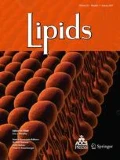Abstract
Barth syndrome (BTHS) is an X-linked genetic disease resulting in loss of cardiolipin (Ptd2Gro). Patients may be predisposed to hypoglycemia and exhibit increases in whole-body glucose disposal rates and a higher fat mass percentage. We examined the reasons for this in BTHS lymphoblasts. BTHS lymphoblasts exhibited a 60% increase (p < 0.004) in 2-[1,2-3H(N)]deoxy-d-glucose uptake, a 40% increase (p < 0.01) in glucose transporter-3 protein expression, an increase in phosphorylated-adenosine monophosphate kinase (AMPK) and a 58% increase (p < 0.001) in the phosphorylated-AMPK/AMPK ratio compared to controls. In addition, BTHS lymphoblasts exhibited a 90% (p < 0.001) increase in d-[U-14C]glucose incorporated into 1,2,3-triacyl-sn-glycerol (TAG) and a 29% increase (p < 0.025) in 1,2-diacyl-sn-glycerol acyltransferase-2 activity compared to controls. Thus, BTHS lymphoblasts exhibit increased glucose transport and increased glucose utilization for TAG synthesis. These results may, in part, explain why BTHS patients exhibit an increase in whole-body glucose disposal rates, may be predisposed to hypoglycemia and exhibit a higher fat mass percentage.



Abbreviations
- BTHS:
-
Barth syndrome
- TAZ :
-
Tafazzin
- Ptd2Gro:
-
Cardiolipin
- 2-[3H]DG:
-
2-[1,2-3H(N)]deoxy-d-glucose
- GLUT1:
-
Glucose transporter-1
- GLUT3:
-
Glucose transporter-3
- DAG:
-
1,2-Diacyl-sn-glycerol
- DGAT-2:
-
1,2-Diacyl-sn-glycerol acyltransferase-2
- TAG:
-
1,2,3-Triacyl-sn-glycerol
- PtdGro:
-
Phosphatidylglycerol
- PtdCho:
-
Phosphatidylcholine
- PtdEtn:
-
Phosphatidylethanolamine
- PtdSer/PtdIns:
-
Phosphatidylserine/phosphatidylinositol
References
Mejia EA, Hatch GM (2016) Mitochondrial phospholipids: role in mitochondrial function. J Bioenerg Biomembr 48(2):99–112
Schlame M, Greenberg ML (2017) Biosynthesis, remodeling and turnover of mitochondrial cardiolipin. Biochim Biophys Acta 1862(1):3–7
Clarke SL et al (2013) Barth syndrome. Orphanet J Rare Dis 8:23
Schlame M (2013) Cardiolipin remodeling and the function of tafazzin. Biochim Biophys Acta 1831(3):582–588
Cade WT et al (2013) Substrate metabolism during basal and hyperinsulinemic conditions in adolescents and young-adults with Barth syndrome. J Inherit Metab Dis 36(1):91–101
Yamamoto N et al (2011) Measurement of glucose uptake in cultured cells. Curr Protoc Pharmacol 12(14):1–22
Hatch GM, McClarty G (1996) Regulation of cardiolipin biosynthesis in H9c2 cardiac myoblasts by cytidine 5′-triphosphate. J Biol Chem 271(42):25810–25816
Chang W, Chen L, Hatch GM (2016) Berberine treatment attenuates the palmitate-mediated inhibition of glucose uptake and consumption through increased 1,2,3-triacyl-sn-glycerol synthesis and accumulation in H9c2 cardiomyocytes. Biochim Biophys Acta 1861(4):352–362
Ravandi A et al (2014) Release of bioactive lipids during percutaneous coronary, and peripheral arterial interventions in humans: lipidomic analysis of distal embolic protection devices. J Amer Col Cardiol 63(19):1961–1971
Bradford MM (1976) A rapid and sensitive method for the quantitation of microgram quantities of protein utilizing the principle of protein-dye binding. Anal Biochem 72:248–254
Mantych GJ et al (1992) Cellular localization and characterization of Glut 3 glucose transporter isoform in human brain. Endocrinology 131(3):1270–1278
Carruthers A et al (2009) Will the original glucose transporter isoform please stand up! Am J Physiol Endocrinol Metab 297(4):E836–E848
Phillips T et al (2005) Differential regulation of the GLUT1 and GLUT3 glucose transporters by growth factors and pro-inflammatory cytokines in equine articular chondrocytes. Vet J 169(2):216–222
He Q et al (2005) Tafazzin knockdown interrupts cell cycle progression in cultured neonatal ventricular fibroblasts. Am J Physiol Heart Circ Physiol 305(9):H1332–H1343
Cidad P, Almeida A, Bolaños JP (2004) Inhibition of mitochondrial respiration by nitric oxide rapidly stimulates cytoprotective GLUT3-mediated glucose uptake through 5′-AMP-activated protein kinase. Biochem J 384(Pt3):629–636
Ferreira C, Thompson R, Vernon H (2014) Barth syndrome, in GeneReviews®, Pagon RA, Adam MP, Ardinger HH, Wallace SE, Amemiya A, Bean LJH, Bird TD, Fong CT, Mefford HC, Smith RJH, Stephens K (eds), University of Washington, Seattle; pp 1993–2016
Kiebish MA et al (2013) Dysfunctional cardiac mitochondrial bioenergetic, lipidomic, and signaling in a murine model of Barth syndrome. J Lipid Res 54(5):1312–1325
Vreken P et al (2000) Defective remodeling of cardiolipin and phosphatidylglycerol in Barth syndrome. Biochem Biophys Res Commun 279(2):378–382
Vernon HJ et al (2014) Clinical laboratory studies in Barth syndrome. Mol Genet Metab 112(2):143–147
Nguyen H et al (2016) Reduction in cardiolipin decreases mitochondrial spare respiratory capacity and increases glucose transport into and across human brain cerebral microvascular endothelial cells. J Neurochem 139(1):68–80
Acknowledgements
Supported by the Barth Syndrome Foundation of Canada/USA and the National Sciences and Engineering Research Council [RGPIN/03640-2014] (to GMH), a Research Manitoba/CHRIM Studentship (to EMM), and a CHRIM summer studentship (to JCZ). GMH is the Canada Research Chair in Molecular Cardiolipin Metabolism.
Author information
Authors and Affiliations
Corresponding author
About this article
Cite this article
Mejia, E.M., Zinko, J.C., Hauff, K.D. et al. Glucose Uptake and Triacylglycerol Synthesis Are Increased in Barth Syndrome Lymphoblasts. Lipids 52, 161–165 (2017). https://doi.org/10.1007/s11745-017-4232-7
Received:
Accepted:
Published:
Issue Date:
DOI: https://doi.org/10.1007/s11745-017-4232-7

